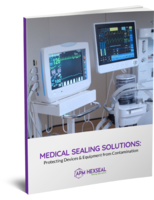Bold About Gold
At the end of June, Nutec Bickley’s sales director Adam Slater was one of over 120 senior executives from around the world to participate in the first AusIMM Mining Leaders Forum to be held in London. AusIMM (The Australasian Institute of Mining and Metallurgy) provides services to professionals engaged in all facets of the global minerals sector and is based in Carlton, VIC, Australia.
A number of key topics were addressed by the top-level presenters, and panels examined the global megatrends forecast to have an impact on mining, how we can resource for the future and attract talent, and the role of digitization in the future of the resources sector. The event was so successful that it will be restaged in London in 2020.
Nutec Bickley has a long history with this sector in Australia and elsewhere, mostly in gold mining, through its GFC proprietary technology. In particular it has had growing success with its carbon reactivation (or carbon regeneration) kilns. These highly specialized rotary kilns are attracting increased attention from plant operators as they result in better gold recovery rates.
*Rotary Kiln design*
The improved recovery rates are achieved with more effective carbon treatment and the ability to get carbon activity back to a higher level than with standard kilns. There are a number of key factors in the Nutec Bickley rotary kiln design:
Higher temperature resistance, meaning that organic contamination is removed more efficiently. Regenerated carbon is very close to virgin carbon activation levels after treatment in these kilns.
Superior heat transfer fins within the drum to more effectively transfer heat into the carbon. This provides higher carbon bed depths for increased capacities.
More precise steam atmosphere control ensures that treatment takes place without burning or damaging the carbon.
Better pressure control within the drum.
*Carbon in Leach (CIL) and Carbon in Pulp (CIP) processes*
Nutec Bickley’s carbon reactivation kilns are appropriate for both the Carbon in Leach (CIL) and Carbon in Pulp (CIP) processes.
CIL is a process where granular activated carbon particles much larger than the ground ore particles are introduced into the ore pulp. Cyanide leaching and precious metals adsorption onto the activated carbon occur simultaneously. The loaded activated carbon is mechanically screened to separate it from the barren ore pulp and processed to remove the precious metals and prepare it for reuse.
With CIP, granular activated carbon particles much larger than the ground ore particles are added to the cyanidation pulp after the precious metals have been solubilized. The activated carbon and pulp are agitated together to enable the solubilized precious metals to become adsorbed onto the activated carbon. The loaded activated carbon is mechanically screened to separate it from the barren ore pulp and processed to remove the precious metals and prepare it for reuse.
Nutec Bickley rotary kilns for carbon regeneration are furnished with a complete control system that permits kiln operators to regulate all of the kiln parameters, such as carbon feed rate, process temperatures, steam flows, kiln pressure etc. Additionally, these kilns can be equipped with either a carbon preheater or a heat recovery system to ensure the lowest possible energy usage.
As part of the enhanced design developed over a number of years, both the entry and the exit of the drum are supplied with a spring-loaded rotary seal with a graphite impregnated seal medium and with an improved labyrinth system to stop the superelastic carbon from bouncing into the seal face and causing grinding and premature failure of the seal.
These kilns can be monitored remotely and Industry 4.0 trend monitoring can be incorporated.




